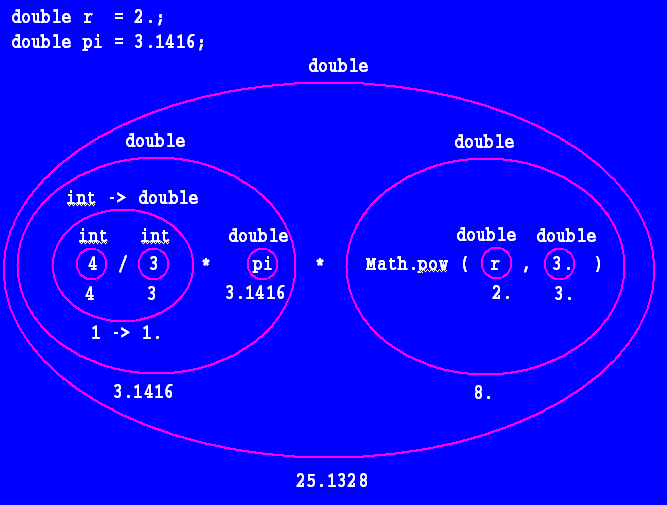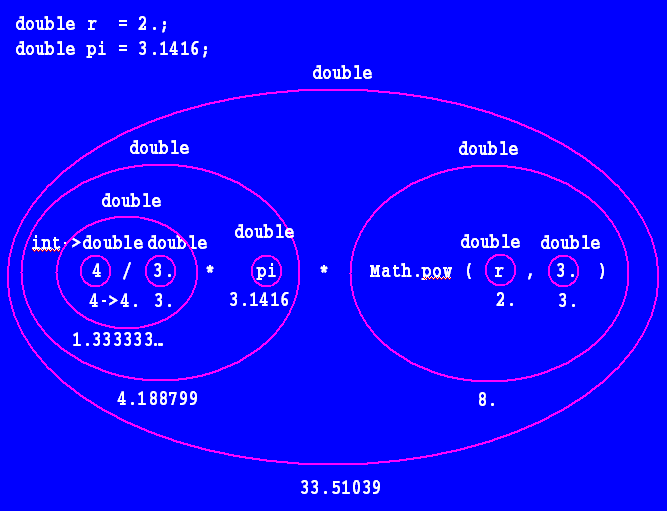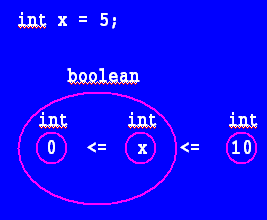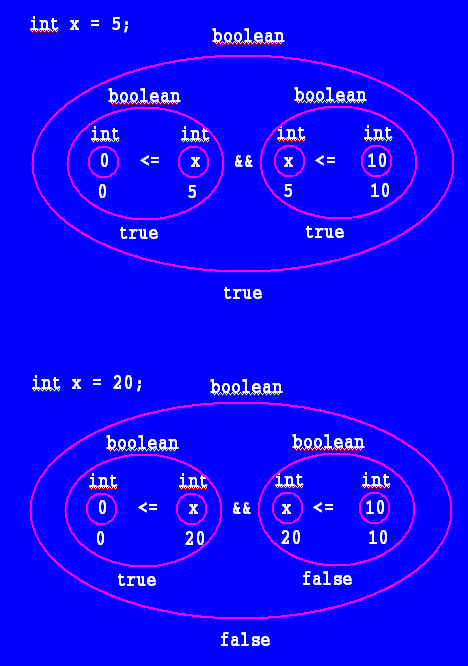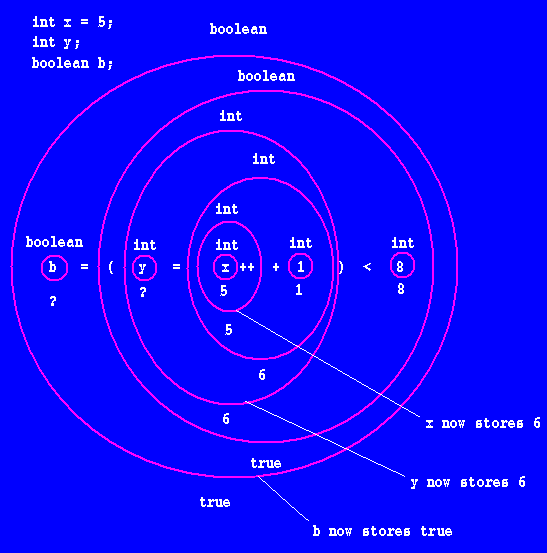(primitive and reference types)
To illustrate the meaning of a declaration, we draw a box: we label the box on the top left with the variable's type and on the top right with the variable's name; we store the initial value (if any) inside the box; if the declarator specifies no initialization option, we write a question mark inside the box. So, we always write something in each box: a value of the right type or a question mark (not a char or String literal: just a question mark).
Ther are two major categories of types in Java: primitive and reference. All primitive types are fixed in the language, named by keywords; we will learn more about, and repeatedly use the primitive types int, double, boolean, and char. All reference types come from class libraries that are written by programmers Right now, the only reference type that we currently know is String, which is declared in the standard Java library. We will learn about other reference types soon, and how to declare our own new reference types a bit later. The String reference type is special, because it is the only one that also has literal values..
The only difference between primitive and reference types is what can appear inside the box in the picture of a variable. Variables declared of a primitive type store values; variables declared of a reference type store references. For a variable of a primitive type, we write in its box either a question mark or a literal of the declared type. For a variable of a reference type, we write in its box either a question mark, the literal value null (usable for all reference types: it means that the variable refers to nothing), or an arrow (called a reference) that leads to an object (an oval labelled by the same type) that stores a collection of data (for Strings, the collection of characters that comprise the String's value).
We will learn much much more about primitive and reference types later. For now, it is critical just that you understand, given a declaration, how to illustrate its meaning with a picture. The pictures below illustate the meaning of the following declarations.
int a;
int b = 0;
boolean c = false;
String d;
String e = null;
String f = "Hello";

We will explore such illustrations further when we learn about state-change operators. We will extend such illustration when we learn about methods (which declare parameter variables) and objects (whose classes declare instance variables).




